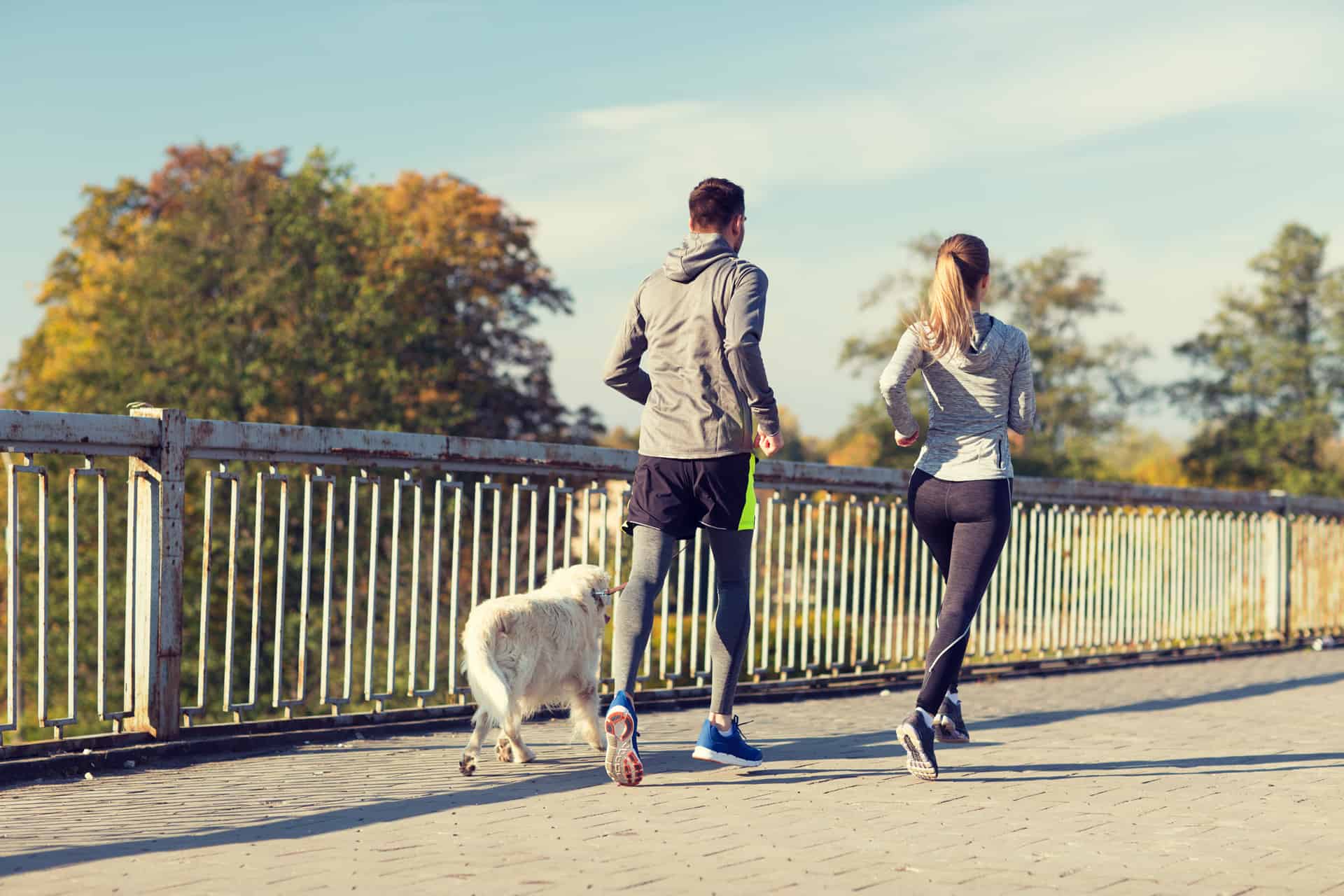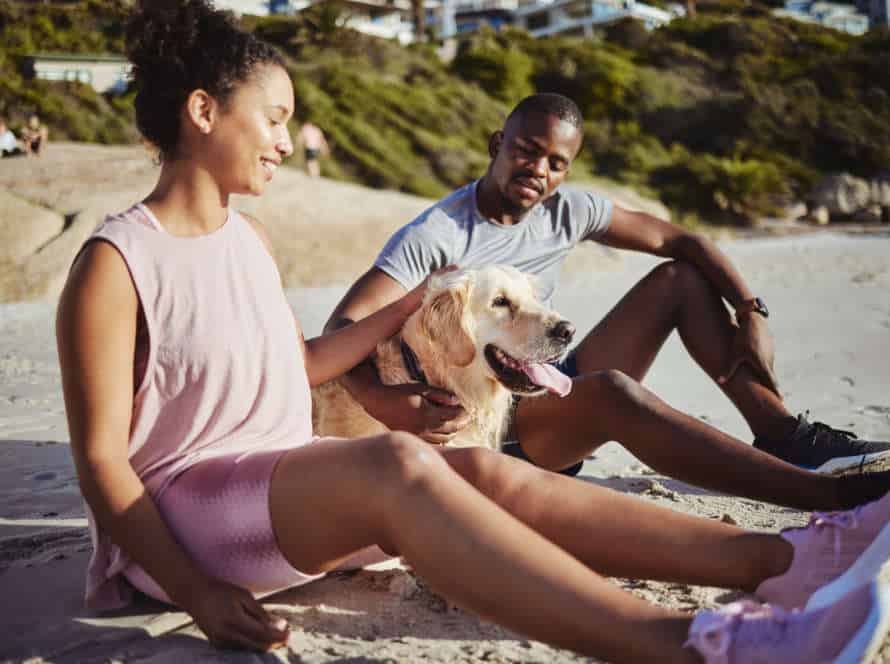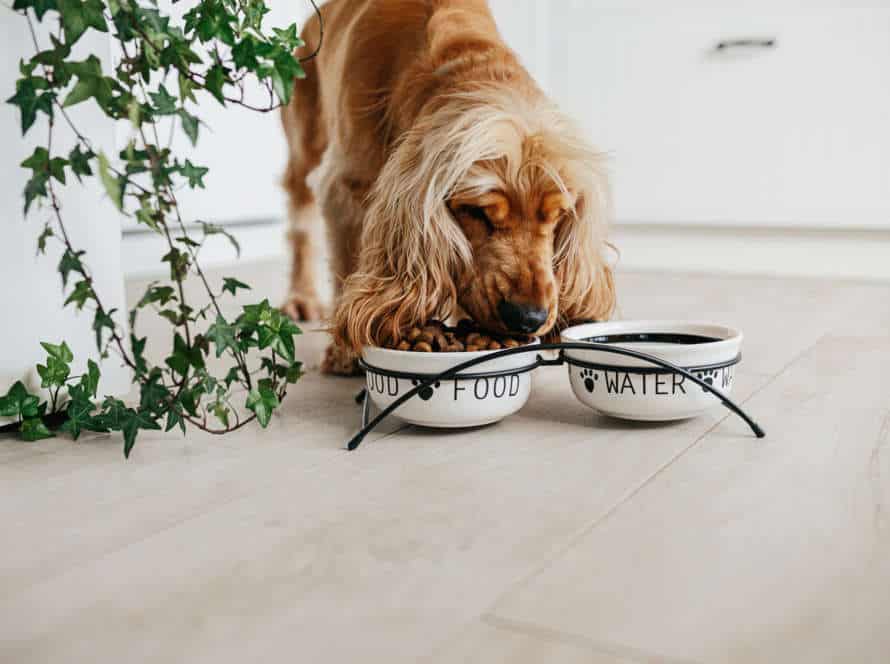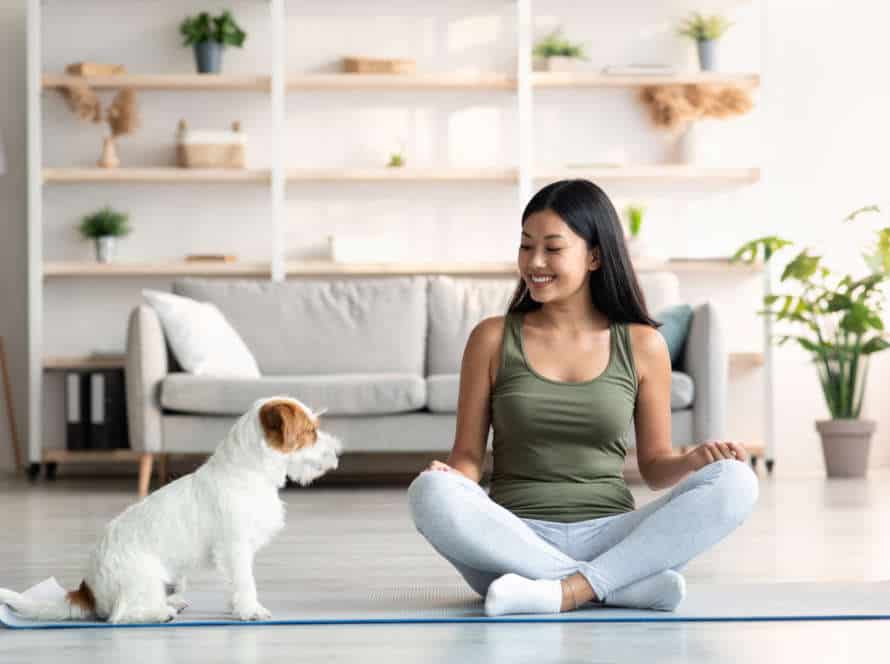The Importance of Exercise for Senior Dogs: Tips for Success
Exercise is vital for old pooches’ health and happiness. It helps with their movement, keeping them trim, and preventing age-related problems. However, when exercising senior dogs, their mobility limitations and health conditions must be taken into account. Here’s how to make it successful:
- Start slow: Short walks or swimming are good low-impact activities. Increase intensity and time gradually.
- Stimulate their brains: Puzzles, scent work, and obedience training will help physically and mentally.
- Monitor for fatigue: Look out for heavy panting, limping, or refusal to continue.
- Think about joint supplements: Glucosamine and chondroitin can help with joint health.
With the right care, senior pups can stay active and healthy during their golden years.
Benefits of Exercise for Senior Dogs
Exercise is essential for dogs of all ages. Especially for seniors! Regular exercise helps them stay healthy and energetic even in their later years. Here’s why it’s important and some tips to get them moving.
Benefits of exercise for senior dogs include: more energy, better health, and an active lifestyle. Tips for getting your senior pup moving: take them for walks, play fetch, and explore new places.
Helps in maintaining healthy body weight and muscle mass
Exercise can be a great way for senior dogs to stay healthy and fit. It burns calories and strengthens muscles. Plus, it has other benefits too! Here’s what exercise can do for your senior pup:
- Keeps weight in check and prevents obesity.
- Promotes joint health and reduces the risk of arthritis.
- Enhances cardiovascular function and guards against heart disease.
- Enhances cognitive abilities and improves mental health.
Remember: Talk to your vet before you start exercising your senior dog. Start slow and gradually increase intensity and duration for the best results. Showing love and keeping active will keep your pup happy and healthy!
Improves cardiovascular health and reduces the risk of heart disease
Exercising regularly can better your senior pup’s cardiovascular health and reduce the danger of heart disease. Exercise is key for all dogs, but especially for elderly dogs who may have mobility or health issues limiting physical activity.
Here are some tips to exercise senior dogs:
- Start slow with a gentle warm-up to prevent injury.
- Pick gentle, low-impact activities suitable for the pup’s age, breed, and condition.
- Keep the routine brief and gently increase duration and intensity over time.
- Provide plenty of water and shade outside to stop dehydration and heat stroke.
Pro Tip: Exercise can boost your senior dog’s mood, decrease stress and anxiety, and up their quality of life. Talk to your vet to create an exercise plan ideal for your dog’s needs and abilities.
Aides in digestion and helps regulate bowel movements
Exercise is very important for an older dog’s mental and physical health. It has many benefits too! One of the most helpful is helping digestion and keeping bowel movements regular.
As dogs get older, their digestion can go slower. This can lead to constipation and other issues. Exercise can help wake up their digestive system and make sure their bowels stay healthy.
It’s also great for keeping a healthy weight. Overweight dogs have a greater risk of constipation and digestive problems.
Remember, senior dogs can’t do the same kind of exercise as younger ones. Speak to your vet to choose the best exercise plan for your senior pup’s age, breed and health!
Types of Exercise for Senior Dogs
Exercising is awesome for senior pooches! It boosts their strength, energy and overall health. But it’s important to match activities to their age and fitness. So what exercises work best? Let’s explore the different types, their perks, plus safety tips to keep in mind.
Low-impact exercises, such as walking and swimming
Senior dogs benefit from low-impact exercises. These keep them fit and healthy. Walking is great! A leisurely stroll around the block or in a park maintains joint mobility, cardiovascular fitness, and mental stimulation. Swimming is another excellent option. It strengthens muscles without hurting joints. Plus, it boosts circulation and reduces pain. Other low-impact options? Slow jogging, stretching, and indoor low jumps. Always monitor your dog’s response to exercise. Gradually increase duration and intensity. And consult your vet before starting any program.
Mental stimulation exercises, such as puzzles and games
Mental exercises like puzzles and games are an important part of exercise routines for senior dogs. They keep the mind sharp, which improves the quality of life.
Here are a few types you can try:
- Puzzle toys: Buy interactive toys or games with hidden treats for your dog to find.
- Training games: Teach new tricks or commands. This will help sharpen the mind and strengthen the bond.
- Scent work: Hide treats around the house or in the yard for your dog to sniff out.
- Playdate: Get other dogs involved to help exercise social skills and keep the mind active.
Mental exercises are just as important as physical ones for senior dogs. It keeps them healthy and happy.
Strength training exercises using weights and resistance bands
Strength training is awesome for seniors! Weights and resistance bands are perfect for maintaining muscle, improving bone density, and reducing injury risk. Check out these exercises for senior pups:
- Squats: Hold a weight or resistance band at your chest. Your dog should stand in front of you. When they stand on their hind legs, squat down and then stand again.
- Leg lifts: Tie a resistance band around your dog’s ankle. You’ll hold the other end. As they lift their leg, pull the band in the opposite direction.
- Front raises: Hold a weight or resistance band in front of your dog’s chest. They should lift their paws off the ground.
- Hip extensions: Attach a resistance band to your dog’s back leg. Have them lift it backward against the resistance.
Remember to adjust these exercises to fit your pup’s fitness level. It’s best to consult your vet first!
How to Create an Exercise Plan for Senior Dogs
Exercising your elderly pup is key for their wellbeing, strength, and agility. Making an exercise plan for older canines is tricky since their requirements are not the same as younger pooches. Here, we’ll chat about how to make an effective exercise plan for your senior pup and some strategies to make the process simple and successful.
Consult with a veterinarian to determine any health concerns or limitations
Talking to your vet is key before exercising your senior dog. Ask about:
- Your pup’s health status and any recent surgeries.
- Any meds that might change their energy level or physical abilities.
- Their age, breed, and any special health concerns.
- The type of exercise that’s safe and appropriate.
Remember: Start slow, gradually increase the intensity and duration, and watch for signs of pain or discomfort.
Determine the appropriate frequency, duration, and intensity of exercise
For senior dogs, it’s essential to know the best frequency, duration and intensity of exercise for a plan that keeps them healthy and content. Here are some pointers:
- Frequency: Senior dogs can easily injure themselves, so it’s best to have shorter and more frequent exercise sessions. Walks of 20-30 mins every day, or swimming a few times per week, can help with mobility but not cause strain.
- Duration: The length of the exercise depends on the breed and fitness level; start short and gradually increase over time.
- Intensity: Moderate intensity is better for older dogs, avoiding pushing their joints and muscles too much. Low-impact activities like walking, swimming, stretching, or even playtime in the yard are great.
- Pro tip: Get advice from a vet before beginning the plan. Ensure it’s safe and good for their health.
Make modifications to exercises as necessary to accommodate limitations
Formulating an exercise program for senior pooches necessitates altering exercises as needed to suit any restrictions. Follow these tips for a successful workout plan:
- Start Slow: Short walks, stretching, and gentle fetch are good places to start.
- Keep an Eye Out: Keep an eye out for signs of pain or exhaustion. If so, take a break or vary the exercise.
- Modify Effort and Length: Increase stamina step by step, and lengthen and intensify the exercise over time.
- Account for Health Issues: If your pup has health conditions like arthritis, hip dysplasia, or heart trouble, work with your vet to set up a tailored plan that works with their limitations.
- Allow for Breaks: Give them rests days and heed their cues. They may need more rest as they age.
- Pro Tip: Use positive reinforcement to motivate your senior pup and watch out for any potential injuries.
Safety Tips for Senior Dog Exercise
Exercise for all dogs is essential. It’s even more essential for senior dogs. It can reduce joint pain, boost health, and up physical and mental stimulation. However, exercising an older pup comes with risks. Here are a few tips to keep your elderly pooch safe:
Warm up and cool down with gentle stretches
When it comes to exercising your senior pup, warming up and cooling down with stretches is key. It helps prevent injury and supports joint health. Here are some gentle stretches for both warm-up and cool-down:
Warm-up:
- Hip circle: Gently guide their tail in a circular motion for 10-15 seconds.
- Neck stretch: Hold a treat above their head. Guide their nose to their spine. Hold 10-15 seconds.
Cool-down:
- Shoulder stretch: Support their paw. Gently stretch their shoulder forward. 10-15 seconds.
- Hamstring stretch: Lift their hind leg and extend back. Hold for 10-15 seconds.
Listen to their body. Don’t be too rough. Check with your vet before beginning any exercise routine.
Bring water and snacks on longer walks
When strolling with your elderly pup, bring H2O and snacks. This will prevent dehydration and exhaustion. Senior dogs usually have less energy, so give them frequent breaks to relax and hydrate. Bring a collapsible water bowl, water bottle, and treats. Here’s what else to remember:
- Begin slowly and increase the walk’s length and intensity.
- Avoid the hottest times of the day; early morning or late evening are best.
- Monitor signs of fatigue, overheating, or mobility problems. Adjust your route accordingly.
By following these tips, you can make your senior dog’s quality of life better. Pro tip: Get advice from your vet to develop an exercise plan that suits your pup’s individual needs and skills.
Use a harness instead of a collar for better support
For senior dog exercise, harnesses are much better than collars. As dogs age, their bones and joints become weaker and their muscles less strong. Collars can put strain on necks and spines, making existing issues worse. Harnesses spread the pressure over chest and back, which is ideal for dogs with arthritis, hip dysplasia or other mobility problems. Buy adjustable straps for a comfy and secure fit. Take it easy and gradually increase activity levels to stay injury-free.
Signs That Your Senior Dog Needs a Break
Exercising your senior pup is great for their wellbeing. But, you should keep an eye out for signs they’re pushing themselves too hard. Prioritize monitoring strenuousness and obeying their body language. Here are some key indicators that your old doggo needs a breather during exercise:
Panting or excessive fatigue
As senior dogs get older, their energy and stamina can change. If your dog pants or tires quickly, it may be time for a break. Also look out for limping, trouble standing or walking, stiffness, or shortness of breath.
If you notice any of these signs, adjust your pup’s exercise routine. This can mean shorter walks, slower-paced exercise, or lower-impact activities like swimming or stretching.
Pro tip: Talk to your vet so your senior pup can have a safe and effective exercise plan.
Lameness or limping
Lameness or limping? It’s a sign your senior pup needs a break from exercise! As they age, their muscles and joints aren’t as strong. Here’s what else to watch for:
- Trouble getting up/lying down
- Stiffness/soreness post-exercise
- Panting/coughing during/after exercise
- Not wanting to move/play.
If you spot these signs, give your senior pup a break from exercise. Talk to the vet about possible joint issues too. Provide mental stimulation with puzzle toys, gentle walks and swimming. Monitor them during exercise and make adjustments if needed.
Pro Tip: Regular vet visits can help detect/treat mobility issues early, improving their life quality.
Refusal to participate in exercise
If your elderly pooch won’t exercise, there might be health issues. Notice the signs to avoid further problems. Here’s what to watch for:
- Limping? If your dog won’t put weight on a limb, it means discomfort or pain.
- Slowing? If your pup can’t keep up with their usual routine, arthritis or age-related conditions might be at play.
- Breathing troubles? If they’re having difficulty breathing or panting a lot, their body is being pushed too hard.
- Refusal to participate? If they don’t want to walk or aren’t interested in exercise, they need a break.
Exercise is important for senior dogs, but look for signs of overwork. Pro tip: Ask your vet to develop a safe and beneficial plan.
Frequently Asked Questions
1. Why is exercise important for senior dogs?
Regular exercise can improve a senior dog’s mobility, joint health, cognitive function, and overall quality of life. It also helps to manage weight, which is particularly important for elderly dogs with decreased muscle mass and slower metabolism.
2. How much exercise is appropriate for senior dogs?
The amount and intensity of exercise should be tailored to the individual dog’s needs and health status. Generally, two 15-20 minute walks per day or several short play sessions are sufficient for most senior dogs. However, consult with your veterinarian before beginning a new exercise regimen.
3. What types of exercise are best for senior dogs?
Gentle activities like walking, swimming, and low-impact play are ideal for senior dogs. Avoid high-impact activities like jumping or running, which can stress joints and cause injury.
4. What precautions should I take when exercising with my senior dog?
Always monitor your dog’s behavior and energy level during exercise, and stop or slow down if they appear tired or uncomfortable. Avoid exercising in extreme weather conditions, as hot or cold temperatures can be dangerous for senior dogs. Use a harness instead of a collar to prevent neck injury and avoid sudden jerks or pulls.
5. How can I encourage my senior dog to exercise?
Make exercise fun and rewarding for your senior dog by incorporating toys, treats, and positive reinforcement. Start with short, easy walks and gradually increase the duration or intensity over time. Try to vary the activities to keep your dog engaged and prevent boredom.
6. What are some signs that my senior dog may need to adjust their exercise routine?
If your senior dog is showing signs of fatigue or discomfort during or after exercise, such as limping, panting heavily or lack of appetite, it may be time to adjust their exercise routine. Consult with your veterinarian to determine the appropriate modifications.







